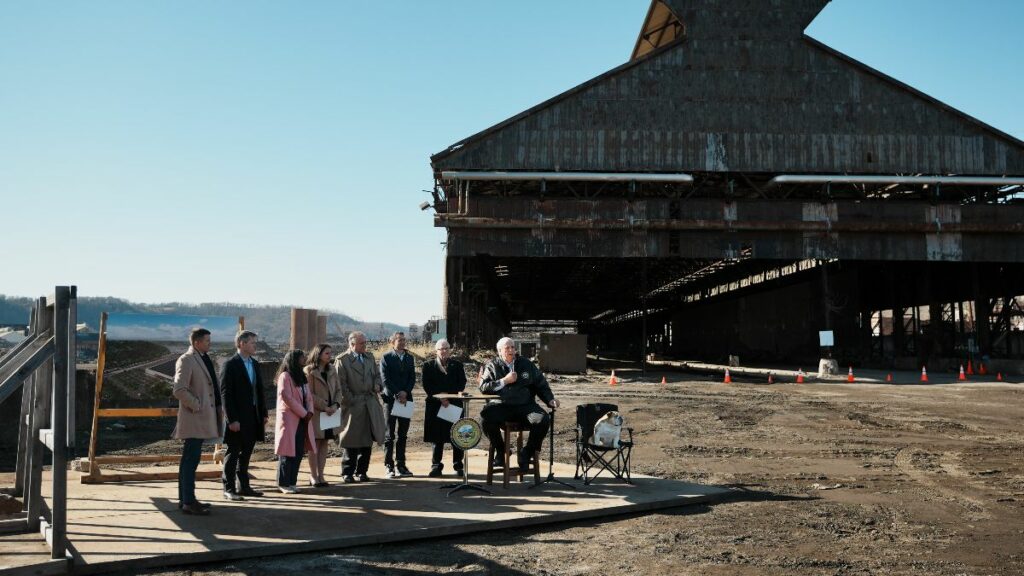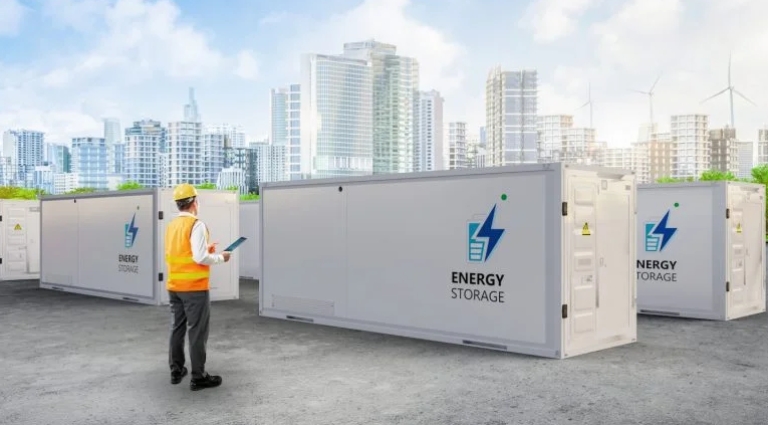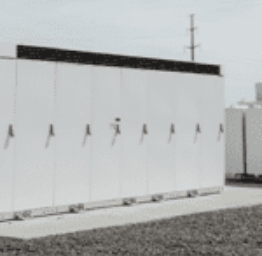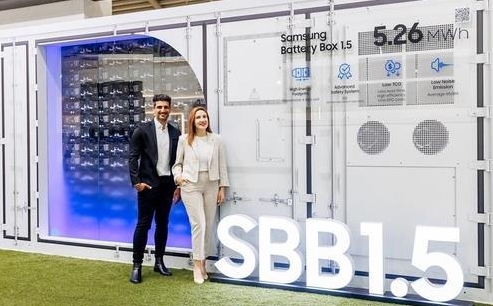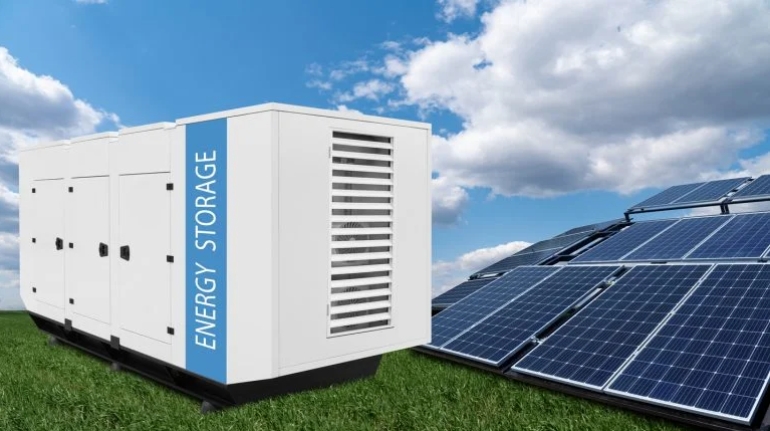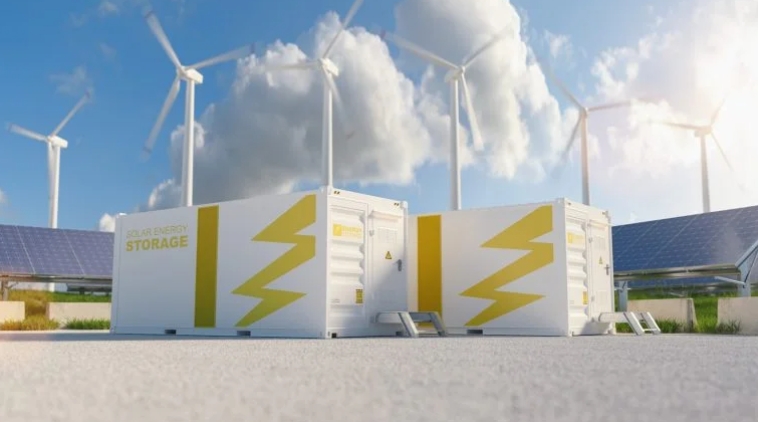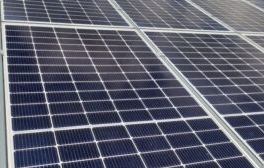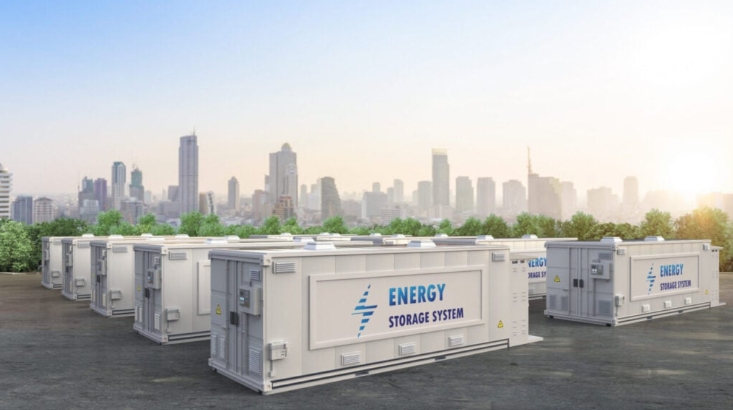Ana Gonzalez has lived in Rialto since childhood and it's where her children were born and raised.
When her son was around 12 years old, Gonzalez said he had trouble breathing and developed bronchitis and pneumonia. In one year, they visited the hospital five times.
"I asked, 'why is this happening so often? Am I doing something wrong?'" she said.
It turned out, Gonzalez' son had developed asthma. With no history of it in the family, doctors said it was likely their environment.
"Our community was getting boxed in by warehouses. And the next thing I know, there was trucks idling in front of my house, not realizing that all of that diesel exhaust, my kids were breathing it," she said.
So, Gonzalez started volunteering at the Center for Community Action and Environmental Justice, a pollution and climate activist organization in the Inland Empire.
"I started fighting back," she said.
A teacher by trade, Gonzalez became a board member at CCAEJ, then eventually quit teaching to become a staff member. Now she's executive director.
"Once you make that connection, that all of this is affecting your own family at the personal level, then you start seeing that there is no partisanship, because you're just trying to protect your family," Gonzalez said.
But she said the fight is often challenging, because many local elected officials don't always take environmental issues seriously.
"We go and push back to the council meetings to not approve certain projects, polluting projects. They're like, 'Oh, you guys are just hysterical, you guys are making things up, you're spreading misinformation,' when we have the science behind us," she said.
Even though Gonzalez said she has "been called a tree hugger many times," she acknowledged that more doors are starting to open to organizations like hers from governments and leaders.
"Even the conservative ones are like, 'yeah, we have a traffic issue. We have a pollution issue,'" she said.
Community members, educators and business owners "get it," Gonzalez said.
"Because people are seeing it. They're seeing it through the fires. They're seeing it through the floods. They're seeing it through the snow, the hail. This is not normal weather," Gonzalez continued.
There is widespread support for fighting the climate crisis
Gonzalez describes the Inland Empire as a "purple" region (somewhere in the middle of "red" conservatism and "blue" liberalism). In the 2020 Presidental election, for example, 44% of voters chose Donald Trump.
A survey conducted by the Yale Program on Climate Change Communication found 71% of San Bernardino residents surveyed said they're worried about global warming. Three quarters believe it will harm plants, animals, and future generations.
Yale's program produces Climate Opinion Maps based on a large national survey dataset with more than 28,000 respondents collected between 2008 and 2021.
The survey also found widespread support for funding renewable energy, regulating carbon emissions and tax rebates for energy-efficient vehicles and solar technology in San Bernardino County.
And, a majority of people in San Bernardino County want citizens, corporations, and politicians to do more to address climate change.
That is ultimately the next step, according to Joe Árvai, a professor of biological sciences and psychology and the director of the Wrigley Institute for Environment and Sustainability at the University of Southern California. He studies how people think and behave around climate change issues.
"That's sort of that next level, right? Getting from 'Hey, it's happening,' to 'I hear you, and I understand you,' to, "Okay, now I'm going to do something about it. And that's something is going to be this,'" he said.
Árvai said it's "heartening that at least in private, more people are acknowledging that this [climate change] is happening, which I think opens the door to people in policy, certainly people in business to start doing things differently."
But there's an important caveat to address, he said.
"You can say that you're worried but whether or not you do something about it is a different matter entirely," said Árvai.
Making a change can be complicated
Part of the hurdle for many in Southern California to make a change in their personal lives is money.
"The public often views individual action on climate change through the lens of things that can be paid for," said Ali Frazzini, a sustainability policy adviser for Los Angeles County's Chief Sustainability Office.
She pointed to things like electric cars, upgrading your home to use less fossil fuels and adding green space.
"That will only benefit people who are wealthy enough...and that won't get us where we need on our climate goals because we can't rely on people's personal bank accounts to help us mitigate climate change. So that's why we really have to think about the public resources that we can make available," she said.
Another challenge with making changes in a places as large and dense as Southern California is balancing the speed of change with unexpected impacts.
"The faster you go, the more likely you are to have unintended consequences," Frazzini said.
"So if we're really trying to do this in a way that doesn't hurt communities, that doesn't exacerbate inequality or create some kind of negative health consequence, we need to make sure that we're doing extensive community engagement, that people sharing their lived expertise as part of that community engagement have opportunities to get fairly compensated for their contributions," Frazzini continued.
Some communities feel climate change impacts more than others
That's where environmental justice initiatives come in.
Michael Méndez, an assistant professor of environmental policy and planning at UC Irvine said even though extreme weather events like heat waves, droughts and wildfires are happening throughout the state and the country.
An environmental justice lens on climate change shows "how some communities are more impacted than others," Méndez said.
In 2016, California lawmakers passed SB 1000, requiring local governments to address environmental justice in their general plans by 2018.
General plans are blueprints for how a community will build things like parks, hospitals and schools.
"Over the decades with this idea of environmental justice, many scholars and community activists have shown that urban planning has been used as...a discriminatory...process where you're segregating a lot of the environmental benefits and amenities," Méndez explained.
For example, he said cities and counties tend to have more parks in the wealthier communities while toxic facilities are often in low-income communities of color.
By addressing these issues in urban and general plans, Méndez said local agencies can answer questions like, "what are the environmental inequities? Where is the pollution? Being situated in what neighborhoods?"
Iron-air battery firm Form Energy has received a US$12 million grant from the state of New York for a 1GWh long-duration energy storage project, whilst Ecolectro Inc, PolyJoule Inc and Urban Electric Power received smaller amounts.
The US$12 million will go towards a 10MW/1,000MWh demonstration project that Form Energy will develop, design and build using its iron-air battery materials with project location still to be determined.
Form has developed a battery chemistry based around the oxidisation, or rust, of iron that can store electrical energy and discharge it at 100+ hours cost-effectively, the company has claimed.
The company is already in the process of deploying two systems of the same size for utility Xcel Energy in Minnesota and Colorado, and started building its gigafactory in West Virginia earlier this year.
The US$15 million funding will be administered by the New York State Energy Research and Development Authority (NYSERDA) and will see smaller amounts go to the three other companies.
Ecolectro Inc will get just over US$1 million to build prototype electrolyser units using its polymer chemistry and materials that are expected to reduce the cost of producing hydrogen via electrolysis and create a drop-in replacement for current designs. The units will be built in a pilot project with Liberty Utilities in Massena, New York.
PolyJoule Inc also got a nudge over US$1 million to install 167kW/2MWh modular LDES battery energy storage system (BESS) in partnership with Eastern Generation at its Astoria Generating Station located in Queens, New York. The project aims to prove out its PolyJoule Conductive Polymer BESS technology.
Meanwhile, zinc alkaline battery company Urban Electric Power (UEP) will get around US$700,000 to deploy a 100kW/1MWh BESS in Pearl River, which will provide power resilience to end users, peak shaving and demand response services.
On top of the US$15 million, NYSERDA will administer another US$8.15 million programme to support technologies which have yet to be commercialised. Project submissions should ‘advance, develop or field-test hydrogen, electric, chemical, mechanical or thermal-electric storage technologies that will address renewable integration challenges, such as grid congestion, hosting capacity constraints and siting in New York City’, the annoucement said.
